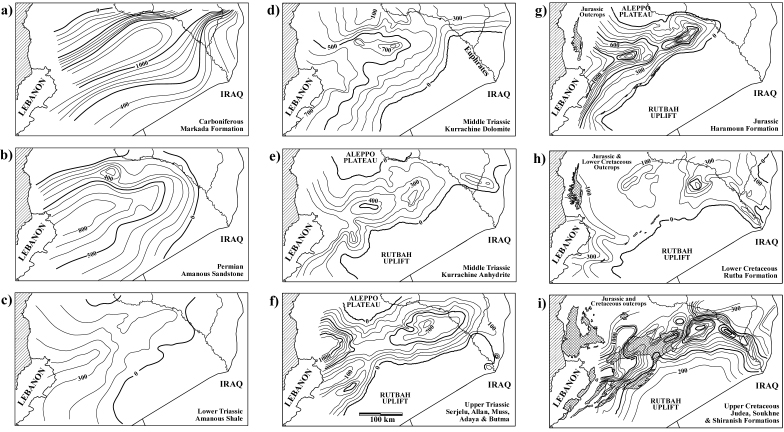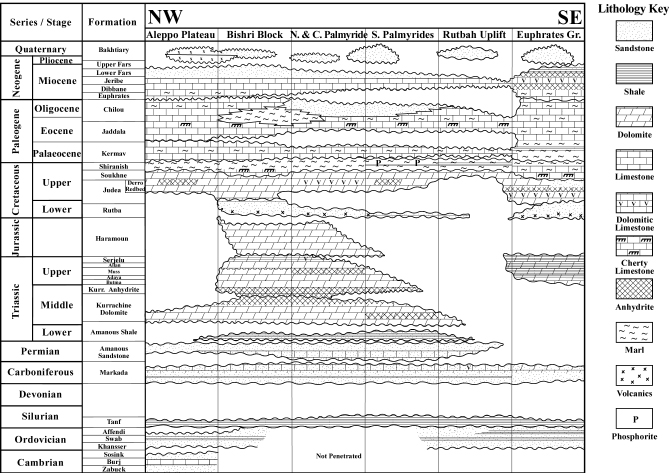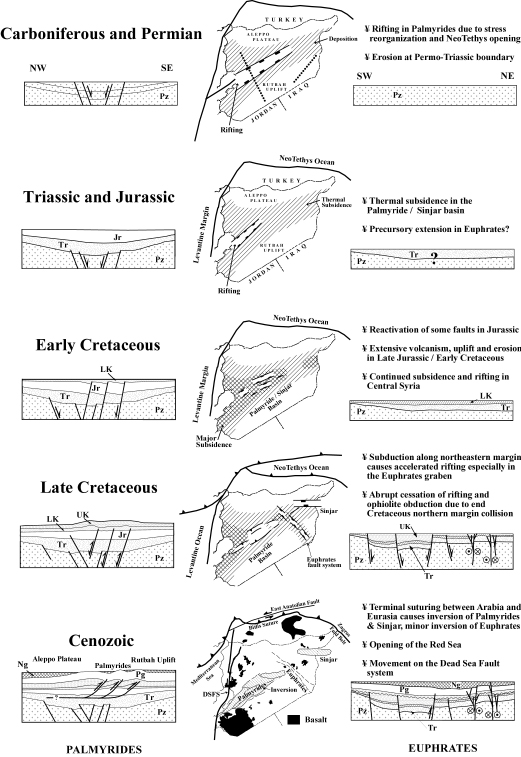Home | Results Summary | Publications | Participants | M.East / N.Africa Home
![]()
The Palmyride Basin and the Euphrates fault system are two Late Paleozoic / Mesozoic rifts that formed on the southern margin of the NeoTethys Ocean. Data collected during hydrocarbon exploration are analyzed to determine the geologic history and regional tectonic implications of these structures. The Palmyride Basin formed during Late Paleozoic aulacogen-type rifting and subsequent Mesozoic thermal subsidence and fault reactivation. Basin inversion in the Cenozoic resulted in the formation of the Palmyride fold and thrust belt. In contrast, the Euphrates fault system is an aborted intracontinental rift, formed during the Late Cretaceous, that experienced minor transpression in the Cenozoic. Both these structures are hypothesized to have formed along zones of Proterozoic crustal weakness inherited from the accretion of the Arabian plate. Both regions also contain significant hydrocarbon reserves; predominantly gas in the Palmyride Basin and oil in the Euphrates fault system. The tectonic histories of these features are inseparably linked to the intraplate stresses generated in the northern Arabian plate by the polyphase opening and closing of the adjacent NeoTethys Ocean.
Key Figures and Captions
Figure 1: Isopachs of Mesozoic formations in Syria based on well and seismic data.

Figure 2: Lithostratigraphic chart of Syria.

Figure 3: Summary of results for Palmyride and Euphrates areas.

Go
back to Summary of Results
Go back to
Cornell Syria Project Welcome Page